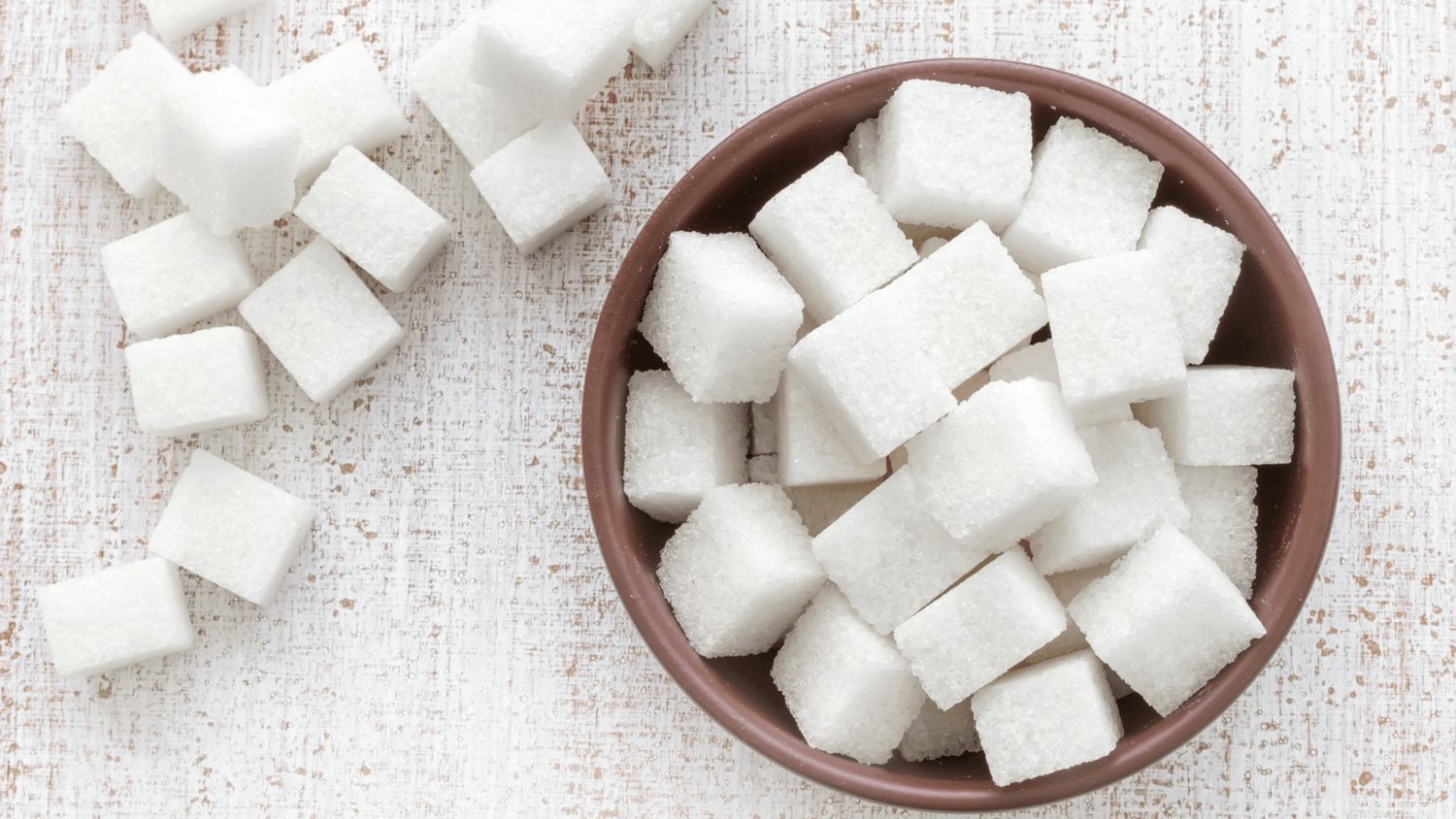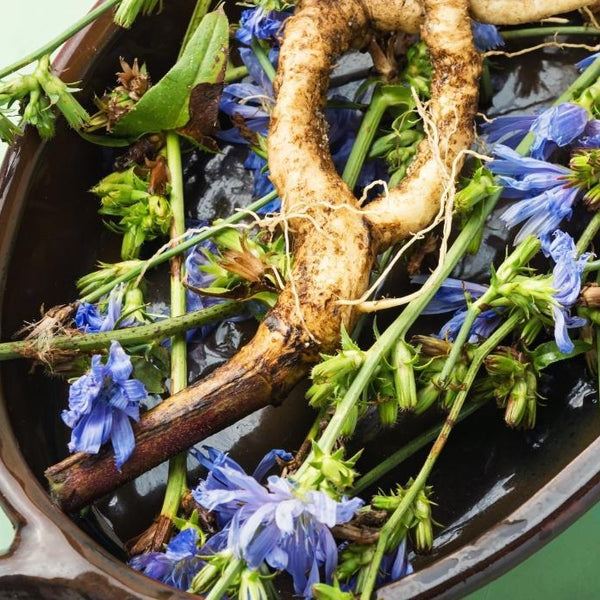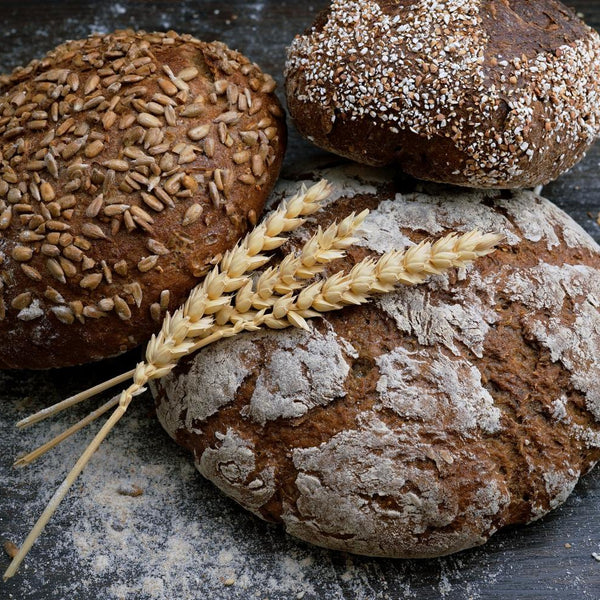
'Added Sugar' and How It Affects Our Body
What is added sugar?
It may be of no surprise that added sugars are not always the best health option for us, even when it’s all natural. But what does this really mean? Added sugars are common in most foods we eat, especially in junk foods such as ice cream, soda and even in the meals we cook at home. Added sugar is simply sugar that is added to foods during the processing and manufacturing process or during cooking. Packaged foods are known to have added sugar, so there are really no surprises here!
In foods such as honey, rice malt syrup there is still the presence of natural sugar or refined sugar. We’ll talk about the different types of sugar but all sugars break down into glucose when consumed… no matter what the source is.
Sugar is everywhere and avoiding sugar can be difficult. For people with no underlying health concerns (such as diabetes and within a healthy weight range - or BMI), consuming small amounts of sugar is safe.
The effects of added sugar on health

In Australia there are approximately 1.8 million people in Australia with diabetes with 280 Australians developing diabetes per day. Overweight and obesity is a major public issue in Australia with 1 in 4 children and adolescent being overweight or obese and 2 in 3 adults with the condition. Obesity is a chronic health issue and can lead to the development of other diseases such as diabetes, high cholesterol, heart disease and sleep apnea.
For people with underlying health problems, consuming sugar can be harmful to your overall health and detrimentally affect your health goals. Managing health isn’t easy but each step counts!
Consuming too much added sugar can cause:
- Cardiovascular disease
- Weight gain
- Higher blood pressure
- High triglyceride
- Type 2 diabetes
- Metabolic syndrome
How about the kids? Sugar is powerful as it can change one’s moods and induce cravings. Sugar is known to give a euphoric sensation and a burst of energy when consumed. This is why it is common to see kids becoming hyperactive after a can of soda. While sugar can provide a burst of energy when tired, it is only temporary and it is artificial. What comes after is the sugar crash. Sugar crashes lead to feelings of fatigue, hunger, irritability and mood changes. On a deeper level, excessive consumption of sugar can damage neurotransmitters causing feelings of depression and anxiety.
Because sugar can give such a great feeling momentarily, it can be addictive and potentially lead to unhealthy sugar cravings. With no added nutritious value, sugar adds empty calories.
It’s important to know what added sugar is and what form it comes in. For people looking to effectively manage diabetes, consuming ‘no added sugar’ products is a go-to plan. PBCo’s mission is to help customers feel their best, so we’ve come up with a new and exciting ‘No Added Sugar’ baking mix range!
Simple sugars

Simple sugars or simple carbs are carbs with one (monosaccharide - “mono” means one) molecule or two (disaccharide - “di” means two) sugar molecules. Monosaccharide sugars come in the form of fructose and glucose while disaccharide sugars are in the form of sucrose and lactose. We’re going to talk about these in detail later.
Glucose and Fructose

Glucose is the primary source of fuel for the human body and can be absorbed by almost every cell in the body. Our body relies on glucose to allow the body to do all sorts of things including providing us with the energy to eat, sleep and play.
So how does glucose form? When we consume carbs, our body breaks it down into units of glucose or blood sugar. Blood glucose levels can rise after consuming carbs. When this happens the pancreas increases insulin production for the cells to absorb sugar from the blood, bringing the blood glucose level down. For diabetics, blood sugar spikes occur more often because the body is resistant to producing sufficient insulin.
Our body is great at producing glucose from carbs such as sugar but it can also create glucose from protein, fats and fibre as well! Isn’t that amazing? So, it is safe to say that our body doesn’t just rely on carbs for energy. Although some carbohydrate foods have an excellent source of fibre, vitamin and minerals, these nutrients can also be received from non-carb heavy foods.
So is fructose healthy because it’s from fruits? As with most foods, for healthy people with no underlying conditions it is safe to consume in moderate amounts. However, if you have any underlying health conditions, fructose should be avoided. Excessive amounts of fructose can pose a health risk for the liver.
Key takeaways
While glucose can be absorbed by almost every cell in the body, fructose can only be absorbed by liver cells. The end product is triglycerides which is a type of fat and a build up can cause damage to the liver. Natural foods that contain glucose are honey, molasses and dried fruits such as dates. Fructose is sugar found in fruits. Some natural foods contain both glucose and fructose such as honey, fruit juice and cane sugar.
Sucrose
This 50/50 combination of glucose and fructose is called sucrose and it is the most common form of sugar found in sugar cane, sugar beets, corn and other natural plants. What about white, brown and raw sugar on your local supermarket’s shelf? That’s sucrose! The table sugar we know is extracted and refined sugar cane.
Nowadays, sucrose can be found in processed foods, fast foods and restaurant foods. It is also found in natural foods such as fruits (bananas, peaches, mango), vegetables (carrot, sweet potato) and nuts. In Australia, evaporated sugar cane is the most common added sugar with 99.9% sucrose. It is in almost everything because it is so abundant.
Sucrose, fructose and glucose can be found naturally in fruits and vegetables while lactose is found in dairy products. Maltose on the other hand is found in seeds of plants during germination.
Galactose
Galactose is a simple sugar and is found in foods with other types of sugars such as lactose. Both galactose and glucose are on par with sweetness but are only about 65% as sweet as sucrose. Added sugar is usually a combination of simple sugars such as fructose, glucose and sucrose. However, lactose, maltose and galactose are not really used as an added sugar.
High Fructose Corn Syrup (HFCS)

HFCS is made from corn starch which is a chain of glucose joined together. From a chain of glucose to corn syrup (different from HFCS but we’ll get there in a minute), these glucose molecules are broken down into separate molecules. As a result, there is a syrupy consistency formed and is 100% glucose. For HFCS, enzymes are added to create fructose and is commonly used in sodas and fruit flavoured juices in the United States.
So how is HFCS different from corn syrup? Although both sweeteners are derived from corn starch, they are different. Corn syrup is a glucose syrup while HFCS (as the name suggests) contains fructose but also glucose and small amounts of other sugars. Not all HFCS contain the same amount of fructose in it!
Types of HFCS
HFCS-55 is most common type of HFCS used in sodas containing 55% fructose, almost 45% glucose and water.
HFCS-42 is mainly used in fruit drinks and baked goods with 42% fructose, almost 58% glucose and water.
Both corn syrup and HFCS are used in confectionery because it is cheaper than sugar and is an effective flavour enhancer. Corn syrup is just as sweet as table sugar but HFCS is 1.5 times sweeter and is also favourable for use for its stability, texture, colour and nice end-product consistency. In Australia, HFCS is rarely used due to bad health effects especially when the body doesn’t process large amounts of fructose without the risk of triglycerides building up.
Although corn syrup is used in baking to ensure a smooth consistency and texture without the clumping of sugar, this makes pecan pies, homemade ice creams and jams taste better. Corn syrup is just as sweet as table sugar so for most manufacturers, using something similar except sweeter can be cost effective.
Natural sweeteners

Just like honey, agave syrup is a brown viscous liquid made from the agave plant and is a natural sweetener. The juice is extracted from the plant then goes through a process to become concentrated. Being a natural sweetener doesn’t mean that it is sugar free and can raise blood sugar levels. Agave syrup is very high in fructose and has a low glycemic index as it is low in glucose. This means that our bodies take longer to break down the carbs but high amounts of fructose can be dangerous on the liver. Like HFCS, agave syrup is also just as sweet.
Honey is a common substitute for table sugar and can be used in drinks, baking and for soothing inflammation. Delicious and natural in taste, honey still contains sugar. In fact it is made up of mainly fructose and glucose with small amounts of sucrose and other sugars.
Dates and other dried fruits also contain sugar. Used in many middle east cuisines, dates play a big role in bringing joy to the table. They have an equal amount of fructose and glucose. Don’t get us wrong, dates are great but not so great if you have underlying health conditions. Despite its small size, dates are packed with sugar!
Artificial sweeteners

The first artificial sweetener Saccharin was first invented in 1897 by two chemists in a lab, Remsen and Fahlberg. They are used because there is very little to no calories for diabetics. With no calories, it also doesn’t add any nutrients into our body and some types can be much sweeter than table sugar.
Different types of artificial sweeteners
Aspartame
200 times sweeter than sugar, this is the most common artificial sweetener used in the world today by beverage manufacturers. If you’ve heard of Equal, that is aspartame. Quitting aspartame can cause you feeling fatigue and even lethargic.
Saccharin
200-700 times sweeter than sugar and used in many diet foods and drinks, saccharin is not good for health in the long-term. It has been found in studies that this type of artificial sweetener can increase the risk of obesity and diabetes as well as liver and renal impairment.
Sucralose
400-700 times sweeter than sugar with no calories, sucralose or also commonly known as Splenda is commonly used in cooking and baking as well as adding to beverages. However, sucralose can cause an increase in sugar cravings and indirectly cause weight gain (through consumption of other sugar foods and drinks).
Acesulfame Potassium (Ace-K)
200 times sweeter than sugar, Ace-K is a highly versatile artificial sweetener. Unlike aspartame, Ace-K is stable when heated, making it a more favourable choice in cooking and baking. However, it’s important to note that Ace-K can induce symptoms such as headaches, nausea and microbiome changes.
Microbiome changes can affect the way our body responds to infectious diseases and chronic illnesses. This can include increased appetite and weight gain, decreased kidney function and metabolic syndrome.
Cyclamate
30-50 times sweeter than sugar, it is less expensive than other artificial sweeteners such as sucralose. Similar to Ace-K it’s stable when heating as well. While it does not cause health effects like the ones above, it’s a reproductive toxicant. Increased exposure to cyclamate poses a risk to reproductive health and interferes with the development and growth of the child from conception to puberty.
Avoiding artificial sweeteners
Why should we avoid it? Just like sugar, artificial sweeteners are also addictive and cause hormonal changes in our body - responsible for mood swings and fatigue or even lethargy. Each type of artificial sweetener affects the body in different ways. Even with no calories, they should be avoided. What’s going on now? There are sugar-free alternatives available and all of our products use it. Making the switch isn’t easy but we believe in you!
Read more about why sugar-free alternatives work here.
What's next?
You can definitely add your own twist to any baking recipe you make, the choice is yours! All of our baking mixes contain no added sugar. For real? Yes! Okay, but this doesn’t mean our products aren’t sweet. To add sweetness to some of our products, we use sugar-free alternatives such as xylitol, erythritol, stevia leaf extract and monk fruit extract. These sugar-free alternatives yield the same great sweet taste but without the guiltiness and compromise!
Interested in knowing more?
Read our blog on sugar-free alternatives! Head on over to PBCo’s website and have a quick look! Our mission is to provide our customers with a healthier baking alternative to help them feel their best.
There you have it! Added sugar explained. If you’re curious or would like to read more on the other types of sugar alternatives and added sugars, have a read of this fun fact blog! We’ve already discussed some of the main added sugars here but if you want to know more about coconut syrup, rice malt syrup, barley malt syrup, honey and maple syrup, click away!
Remember, there are more than 60 types of names for ‘added sugar’.


